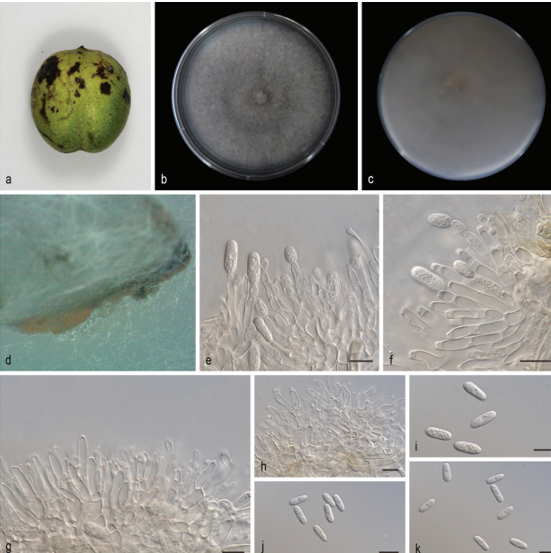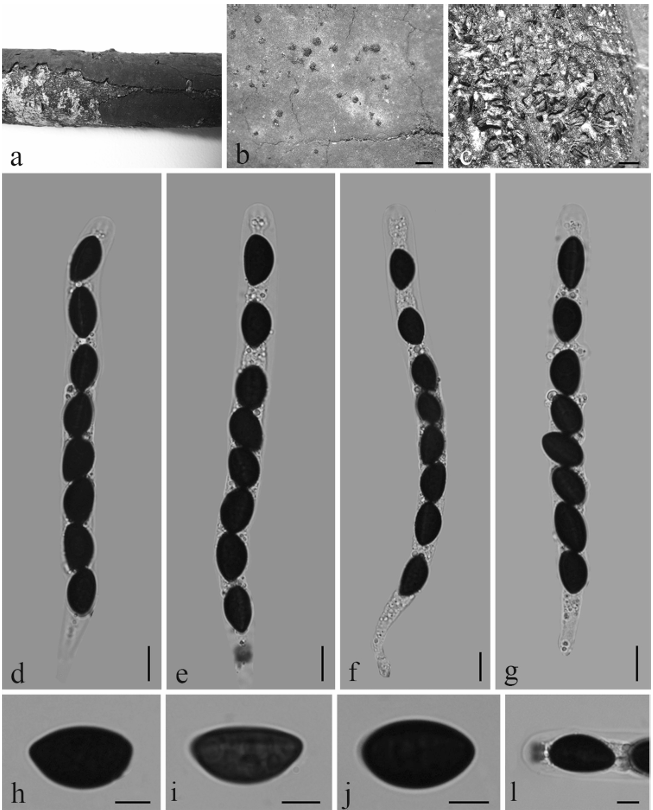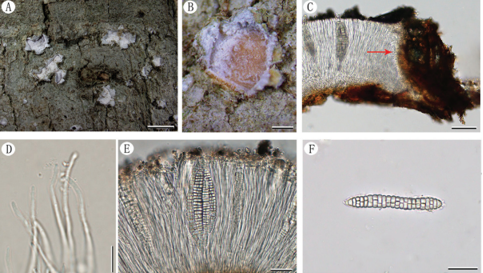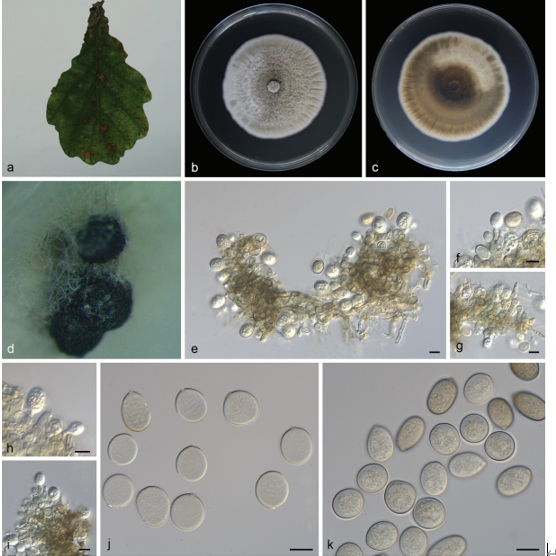Phlebiopsis lacerata C.L. Zhao 2020
MycoBank MB 834941
Holotype: CHINA, Yunnan Province, Puer, Jingdong County, Wuliangshan National Nature Reserve, on angiosperm fallen branch, 3 October 2017, CLZhao 3692/SWFC 3692 (holotype, SWFC!).
Morphological description
Basidiomata.—Annual, resupinate to effuse-reflexed, subceraceous when fresh, turning to leather upon drying, up to 15 cm long, 4 cm wide, 3 mm thick. Pilei often laterally fused. Pileal surface tomentose, buff to ochraceous when fresh and grey ochraceous upon drying. Pores poroid when juvenile in margin, 1–2 per mm, dissepiments thin, lacerated and splitting to spines or odontioid with age, white to cream when fresh, turning to cream to violaceous upon drying. Sterile margin distinct, white.
hyphal structure.—Hyphal system monomitic; generative hyphae simple septate, thick-walled, branched, 3–5.5 µm diam, IKI–, CB–; tissues unchanged in KOH.
hymenium.—Cystidia conical, thick-walled, apically encrusted with large and heavy crystal, 50–85 × 3–5.5 µm, cystidioles absent; basidia narrowly clavate, with four sterigmata and a simple septum, 18–26.5 × 3.5–5.5 µm; basidioles dominant, in shape similar to basidia, but slightly smaller.
Spores.—Basidiospores ellipsoid, hyaline, thin-walled, smooth, IKI–, CB–, 4–5.5(–6) × (2.5)3–3.5 µm, L = 4.45 µm, W = 3.19 µm, Q =1.31–1.48 (n = 240/4).
Associated wood-rot: White.
Habitat: On angiosperm fallen branch.
Distribution: In China.
GenBank Accession: ITS: MT180946;nLSU: MT180950
Notes:
Reference: TAI-MIN XU1,2,5, YUAN-FANG ZENG1,3,6, YU-HUI CHENG2,7 et al.
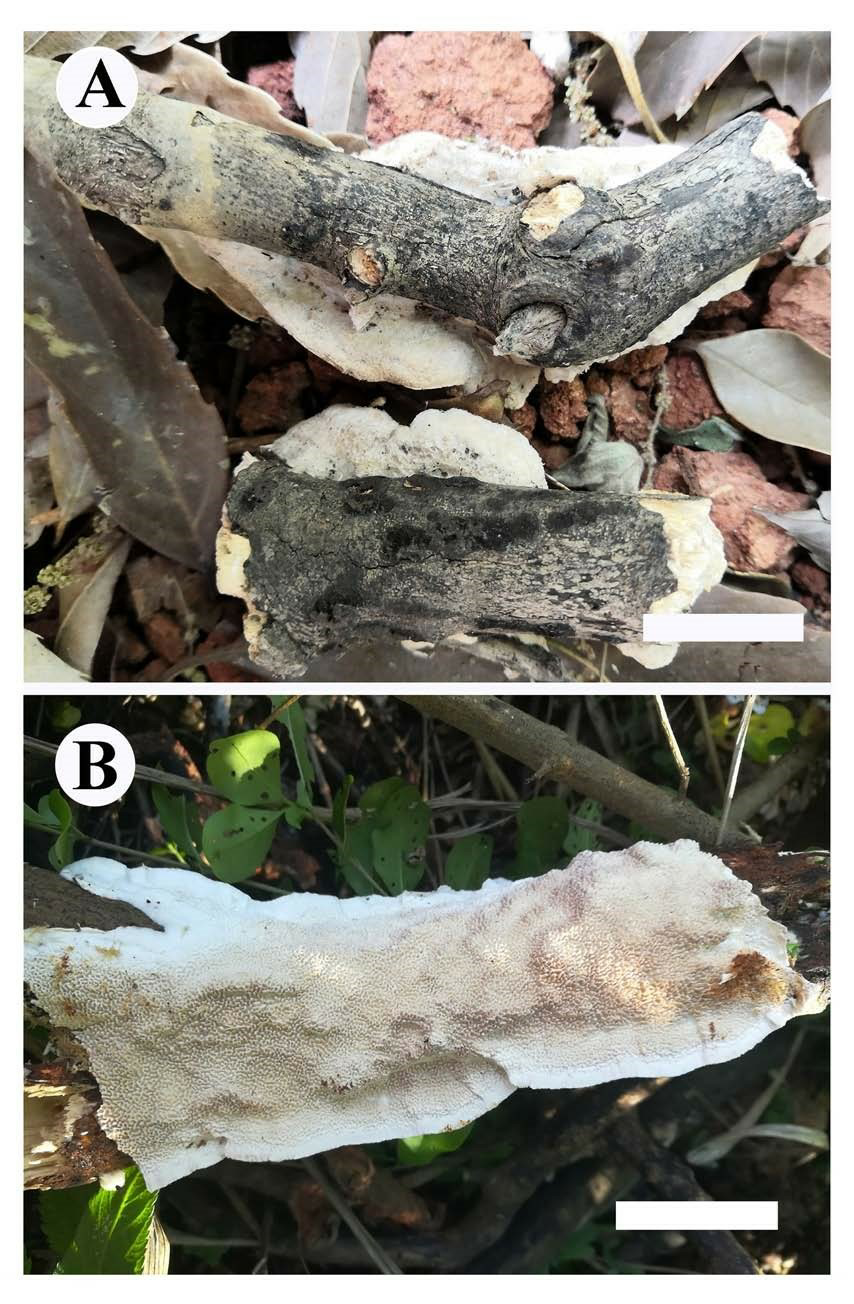
Basidiomata of Phlebiopsis lacerata (holotype). Scale bars: a, b– 2 cm.


